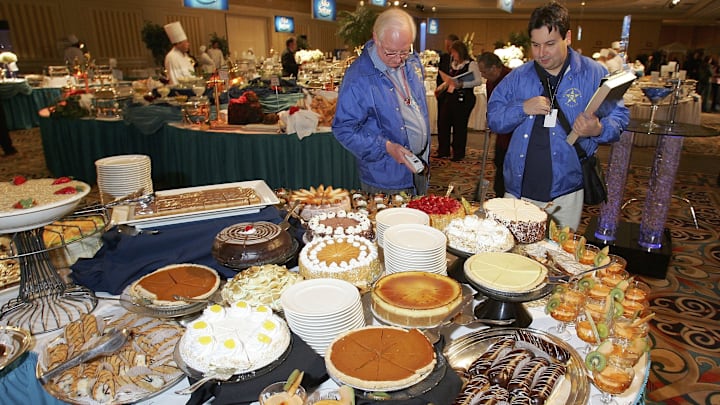Preventing food safety mistakes is a must for any commercial kitchen. It does more than keep you compliant — it safeguards your customer’s health and demonstrates a commitment to maintaining a safe, inclusive and welcoming dining environment.
What should you watch out for in your commercial kitchen? Awareness is the first step to preventing these common food safety mistakes.
Why Food Safety Mistakes Happen
Awareness matters because most food safety mistakes aren’t intentional. Commercial kitchens can be busy, moving at a frenetic pace, and all that stress sometimes equates to forgetfulness. Restaurant owners and managers must create an environment that reminds all staff to pause and breathe. They should emphasize preserving food and service quality over rushing out orders and quickly turning over tables.
Occasionally, food safety mistakes occur due to a lack of knowledge or the requisite supplies. While all food service workers must undergo state-mandated safety training, owners and managers can go further with regular refreshers. Furthermore, they can ensure their facility is fully stocked with PPE, such as gloves and food thermometers and that all equipment, such as refrigerators and stoves, remain clean and in good working order.
7 Food Safety Mistakes to Avoid in Your Commercial Kitchen
The following seven food safety mistakes are most likely to create issues with the health inspector. Fortunately, most of them you can readily correct without a huge capital expenditure.
1. Failing to Wash Your Hands
Any staff member handling food should wash their hands for at least 20 seconds before handling food, singing “Happy Birthday” twice in their head as a timer. Additionally, they should scrub up:
- After handling raw meat, poultry or eggs.
- After using the restroom.
- After touching garbage or any animal waste — including food scraps.
- After blowing their nose, coughing or sneezing.
- After cleaning up after guests who may have infectious diseases, regardless of whether they show symptoms.
2. Failing to Glove Up
Gloves further protect food — and hands. For example, it prevents contamination from any small cuts. Nitrile gloves are a popular choice because they’re free of the latex proteins that can cause a reaction in some people while still satisfying the FDA Code of Federal Regulations Title 21. Establishments concerned with their environmental footprint will delight in knowing that biodegradable versions now exist and some facilities will recycle them.
3. Stacking It Up Incorrectly
If you watch any of the popular restaurant rescue shows, you know a common food safety mistake is improper food storage. While you may have seen dramatic depictions of rot and contamination, in most cases, this error simply entails placing items on the wrong shelves.
Foods must remain cooler than 41° Fahrenheit to slow the growth of bacteria that cause food-borne illnesses. Notice the above sentence reads “slow,” not “stop.” Some contamination can still occur. Therefore, you should place items on your refrigerator shelves in the following order, from least to greatest risk:
- Top shelf — ready-to-eat foods, including fruits and vegetables and any leftovers
- Seafood and eggs
- Whole cuts of beef and pork
- Ground meats and seafood
- Poultry
4. Temperature Inconsistencies
Food thermometers matter because commercial kitchens must ensure any meat they serve is cooked to a minimal standard to prevent food-borne illness. This food safety mistake often happens during rush times when plates begin flying — remember, create a mindset of protecting quality first. Ask yourself what Gordan Ramsay would say if he cut into an underdone piece of pork. Here’s the minimum internal temperature for various foods:
- Steaks, roasts and chops: 145°F
- Ground meat: 160°F
- Casseroles: 165°F
- Poultry: 165°F
- Egg dishes (such as frittata): 160°F
5. Cross-Contamination
Cross-contamination occurs when one food touches another, passing germs or other problematic molecules. This condition can affect food safety even when unrelated to general food-borne illnesses. For example, most people have little problem digesting a brown rice pizza crust that contains a touch of gluten — but for those with celiac disease, it can trigger a painful flare and harm their health.
Commercial kitchens that declare themselves free of specific allergens, like gluten, must often have separate preparation areas to avoid cross-contamination. However, all kitchens should have basic cross-contamination prevention measures, such as using different cutting boards for meats and vegetables and separate dishes for raw and prepared foods.
6. Dirty Equipment
Dirty equipment contributes to cross-contamination woes and can foster food-borne illnesses. This food safety mistake is perhaps the most likely to draw the critical eye of the local health inspector.
Any commercial kitchen should clean and sanitize any equipment they use on a daily basis. For example, they should sanitize all countertops, frequently used appliances, tables and chairs daily and sweep and mop the floor. Additionally, they should perform a deep cleaning once per month, although some establishments do so every two weeks. These entail taking apart equipment to address grease and grit that gets stuck in tight crevices and improve the longevity of your pricey equipment.
7. Buffet Woes
Finally, restaurants that feature a buffet must ensure it meets food safety guidelines. For example, heating trays must keep hot foods warm to the specified temperature, and crews should swap out such dishes at least every two hours to prevent contamination. They should include plenty of serving utensils to avoid cross-contamination and provide gloves for patrons to wear. Finally, establishments must install sneeze guards to protect against contamination.
Common Food Safety Mistakes
Food safety mistakes often occur due to a lack of awareness, either due to distraction or lack of training. Additionally, restaurant owners and managers should ensure that all staff have the equipment they need to keep things safe and sanitary. Prioritizing food safety demonstrates a commitment to customer service and preserving the fun and relaxation that accompanies dining out.
